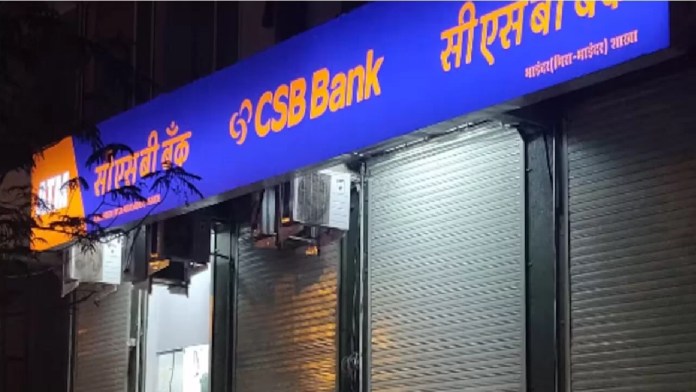KOCHI: The Kerala-based ESAF Small Finance Bank and CSB Bank have reported sequential drops in deposits during the quarter ending June 30, 2025, while the banks in general are frantically hunting for deposits.
On the other hand, ESAF is actively pruning its micro loan portfolio amid mounting asset-quality issues with unsecured loans, more particularly with micro loans.
Deposits under strain
ESAF saw its total deposits dip 2.49 per cent quarter-on-quarter in Q1 FY26 – from Rs23,277 crore in March to Rs22,698 crore in June – reflecting declines across term deposits (–2.42 per cent to Rs17,070 crore) and current and savings account – CASA (–2.68% to Rs5,628 crore).
CSB Bank registered a similar trend, losing Rs871 crore (–2.4 per cent) in deposits during the quarter, with both CASA and term deposits sliding amid increased competition from high-yield retail investment alternatives.
A top official from a Thrissur-based bank told businessbenchmark.news that Kerala banks are grappling with high credit-deposit ratios (CD ratio) and finding it difficult to source deposits in a market flooded with mutual funds and SIPs.
Moreover, more large banks have opened their branches within the state, while leading banks that already enjoy presence have ramped up their branch network lately.
“With mutual funds and SIPs attracting retail savings, both banks need to innovate in deposit mobilisation – be it through digital channels, product differentiation, or rate competitiveness,” said an analyst.
ESAF’s strategy
ESAF deliberately shrank its microloan book by 15.07 per cent sequentially (to Rs7,522 crore) and 39.14 per cent year-on-year (from Rs12,359 crore).
This is part of a broader strategy of ESAF Bank to address elevated non-performing assets (NPAs), which stood at a worrying 66 per cent of net worth as of March 2025.
The bank has redirected its portfolio towards higher-quality secured products: retail loans surged 7.9 per cent sequentially (to Rs10,702 crore) and an impressive 67 per cent year-on-year.
In Q4, secured lending accounted for over 52 per cent of ESAF’s loan book – a deliberate shift driven by asset-quality concerns rather than a short-term performance tweak.
CSB Bank’s gold loans
At CSB, despite deposit outflows, gross advances rose 32 per cent year-on-year to Rs33,142 crore, fuelled by a 36 per cent surge in gold loans that now constitute around 45 per cent of its portfolio.
Such a high concentration on one loan category – while profitable – is also noted by analysts as a potential concentration risk.
Strategic views
Banking experts in Kerala warn that high credit-deposit ratios are putting pressure on regional banks. “Lending will become a challenge unless banks develop a strong deposit portfolio,” a source told businessbenchmark.news.
Meanwhile, ESAF’s move to reduce microfinance exposure is a direct response to troubling loan performance and swelling NPAs in the unsecured lending space.



